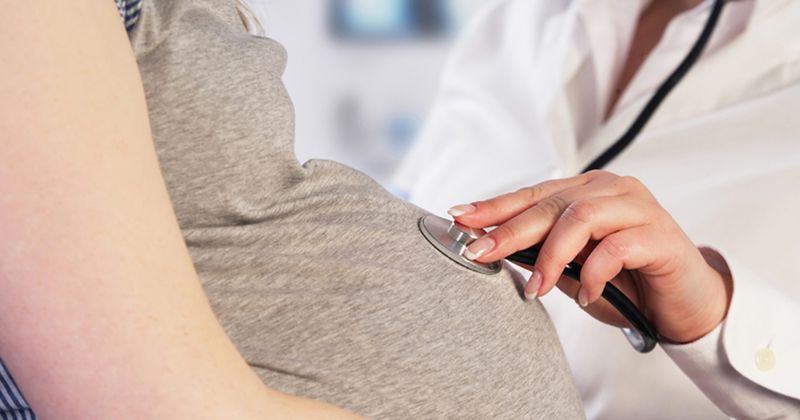Multidisciplinary team key to ‘rethinking approach to ILD in pregnancy’
Close monitoring by a multidisciplinary team may allow pregnant women with interstitial lung disease secondary to autoimmune disease to avoid terminating their pregnancy, according to a presenter at ACR Convergence 2020 virtual meeting.

“Many of these patients [with interstitial lung disease], if they’re young women, are interested in getting pregnant and becoming a mother, but the recommendation from many obstetricians, as well as rheumatologists, has been one of fear and strong discouragement for pregnancy,” Megan Clowse, MD, MPH, associate professor of medicine, Division of Rheumatology and Immunology at Duke University, said during a press conference. “There is old data for women with lung disease in general, suggesting high rates of maternal death and for that reason, many women with interstitial lung disease have been told that they should never get pregnant and therefore, for many of them, not become a mother.”

Based on their patients’ desire to become pregnant, Clowse and colleagues searched the literature for guidance, but found less than a handful of studies that were decades old, the largest of which included only 15 patients. So, the researchers turned to the Duke University EMR to identify medical records for pregnancies in women with ILD between January 1, 1996, and July 1, 2019.
Severity of ILD was determined using percent predicted forced vital capacity (FVC % pred) or percent predicted diffusion capacity for carbon monoxide (DLCO % pred), with the following cut-off values: normal (DLCO % pred > 80% and FVC % pred > 80%); mild (DLCO % pred 61% to 79% or FVC % pred 60% to 79%); moderate (DLCO % pred 40% to 60% or FVC % pred 40% to 59%) and severe (DLCO % pred < 40% or FVC % pred < 40%).
Adverse outcomes included preeclampsia, preterm delivery < 36 weeks, small for gestational age (SGA) infant < 5th percentile, fetal death > 12 weeks or neonatal death (PROMISSE-APO); and preeclampsia and preterm delivery < 34 weeks, preterm delivery < 30 weeks, fetal death >12 weeks or neonatal death (PROMISSE-APO SEVERE). The researchers compared outcomes for patients in the various severity groups using Fisher’s Exact Test and ANOVA.
Sixty-seven patients (average age: 32 years; 83% identified as Black) were included in the analysis, representing 94 pregnancies, including five twin pregnancies. Sarcoidosis accounted for 69% of pregnancies, and 31% had connective tissue disease associated ILD. Sixty-four pregnancies were stratified by severity: 14% normal, 50% mild, 25% moderate and 11% severe. Of those in the normal severity group, 89% had sarcoidosis and of those in the severe group, all had connective tissue disease associated ILD.
Live births occurred in 70% of pregnancies, and 10% of pregnancies were terminated. The rates of adverse outcomes were as follows: preeclampsia (15%), PROMISSE-APO (34%), PROMISSE-APO SEVERE (15%). The rate of PROMISSE-APO was highest among patients with severe disease (P = .03).
According to Clowse, there were no maternal deaths and only two pregnancies required ICU care. Volume overload occurred in four pregnancies during delivery, and one of these four patients developed postpartum heart failure. One patient was intubated during pregnancy and eight pregnancies required oxygen at delivery.
Among women with normal to moderate disease, outcomes were “remarkably good,” and comparable to the general population, Clowse said.
“Our recommendations, based on these data, are that I really think it’s time to rethink our approach to ILD in pregnancy,” she said. “It appears that many of these women can actually have very safe pregnancies that result in happy, healthy mothers and happy, healthy babies. And by preventing these women this opportunity, we are changing the trajectory of their lives in a way that I think perhaps is unnecessary.”
To help ensure pregnancies among women with ILD go better than they otherwise might, Clowse and colleagues recommend a multidisciplinary approach to care and management at a tertiary care center where obstetric and internal medicine assistance are available. They also recommend evaluating both lung and heart disease severity before and during pregnancy, as well as the use of pregnancy compatible ILD medications to control inflammation and scarring. Lastly, they recommend close monitoring during pregnancy and delivery, and after.
“We currently recommend at Duke that patients with more moderate to severe disease stay in the hospital for up to 1 week for monitoring so we can help them through the major physiologic changes that happen after pregnancy,” Clowse said.







